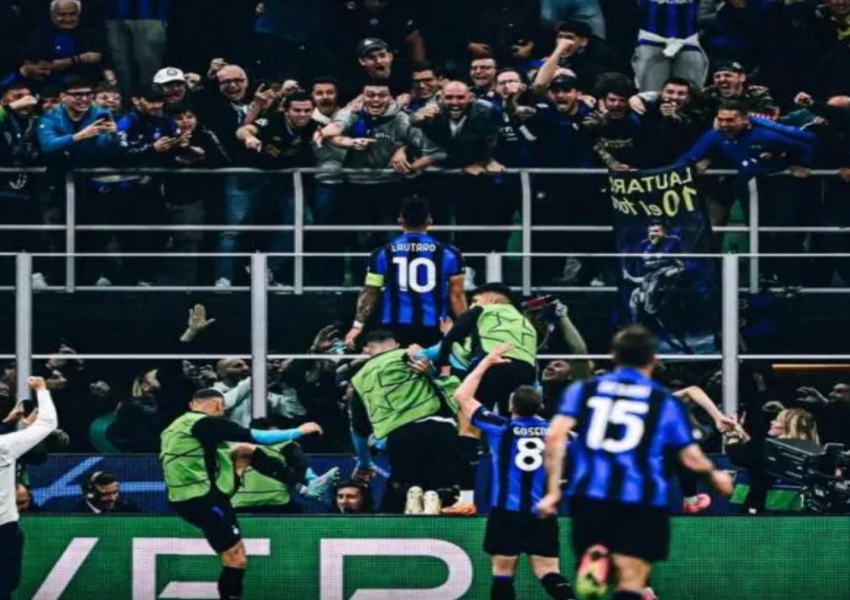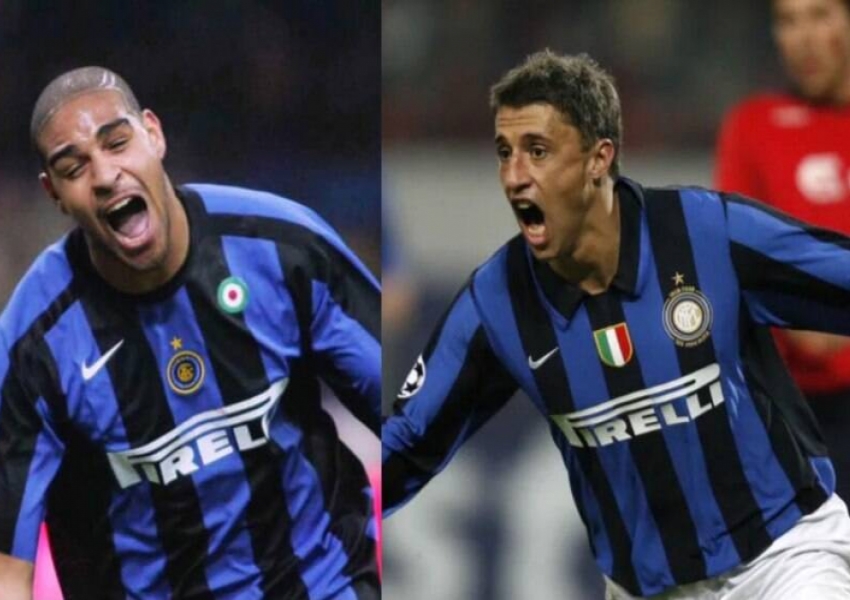Italian Media Praises AC Milan While Casting Doubt on Inter Milan: The “Second Stint Curse” and Aging Squad Concerns
AC Milan has kicked off the new Serie A season with two consecutive wins, securing maximum points despite a major squad overhaul during the summer. As expected, the Italian media has wasted no time in showering the Rossoneri with praise, painting an almost idyllic picture of the team’s performance. In contrast, Inter Milan is once again the target of criticism, with concerns being raised about their aging squad and the so-called "Second Stint Curse."

AC Milan's Glowing Start and the Media's Biased Praise
AC Milan’s strong start has reignited the usual media narrative in Italy, where success on the pitch is often amplified by favorable press coverage. This season, the Rossoneri’s early victories have been met with a chorus of approval from the Italian press, who have not hesitated to draw comparisons with their city rivals, Inter Milan.

Publications like La Gazzetta dello Sport have been quick to laud AC Milan’s performances, while subtly casting doubt on Inter’s prospects. A typical critique pointed out by the Italian media is that Inter relies too heavily on Lautaro Martínez as their main source of goals, implying that this lack of scoring diversity could be a significant weakness. This type of analysis is not new; it’s a recurring theme whenever Milan succeeds, often leading to a simultaneous downgrading of Inter’s achievements.

However, the difference in media treatment between the two Milan clubs is striking. Imagine, for instance, if Inter had suffered four consecutive defeats in the Derby della Madonnina last season, or if it had been AC Milan who reached the Champions League final at their rivals’ expense. Would Inter have been able to brush off such disappointments as easily as Milan did? The answer is likely no. Instead, Inter would have faced intense scrutiny, with banners and protests questioning the direction of the club. Yet, because it was AC Milan on the receiving end, they managed to weather the storm and are now once again basking in the media’s admiration after just two early-season wins.
In contrast, Inter Milan is yet to lose a game this season, but they’re already being criticized. The media has highlighted what they see as two major concerns for Inter: an aging squad and the so-called “Second Stint Curse.” These concerns, whether justified or not, have provided ammunition for critics, especially among some Inter fans who have spent the summer attacking club president Steven Zhang and CEO Giuseppe Marotta for their decisions.
The Aging Squad Narrative: A Misleading Critique
One of the main criticisms leveled against Inter Milan is the supposed aging of their squad. The media narrative often hinges on selective statistics and player choices, conveniently ignoring the full picture. It’s true that Inter brought in several older players this summer, including Yann Sommer (born in 1988), Juan Cuadrado (born in 1988), Alexis Sánchez (born in 1988), and Marko Arnautović (born in 1989). However, this focus on age alone overlooks the fact that Inter also signed younger talents such as Marcus Thuram (born in 1997), Carlos Augusto (born in 1999), and Davide Frattesi (born in 1999).
Moreover, the arrival of these older players coincided with the departure of even older ones. For instance, Samir Handanović (born in 1984), Danilo D’Ambrosio (born in 1988), and Edin Džeko (born in 1986) all left the club, contributing to a net reduction in the team’s average age. In fact, when considering all of Inter’s ins and outs this summer, the squad’s overall age has decreased by a total of 30 years (and this could increase to 31 years if Benjamin Pavard joins as expected).
To suggest that Inter is becoming an older team is therefore not only inaccurate but also misleading. The truth is that Inter has made a concerted effort to balance experience with youth. Marotta himself has been clear on this point, stating that teams under pressure to perform cannot afford to rely solely on young players; the addition of experienced players is a deliberate strategy. Given Marotta’s decades of experience in football management, his judgment should carry more weight than the simplistic analyses offered by some media outlets.
The "Second Stint Curse": Debunking the Myth
Another major point of criticism is the so-called "Second Stint Curse," which suggests that players returning to Inter for a second spell tend to fail. The examples often cited by the media include Romelu Lukaku's underwhelming loan return last season and Davide Santon's disappointing second stint at the club. Based on these cases, there is a narrative building that new signings Alexis Sánchez and Marko Arnautović are destined to follow the same path.
However, this narrative is far from conclusive. Throughout the 21st century, Inter has seen several players return to the club for a second stint with varying degrees of success. Hernán Crespo, for instance, made a significant impact upon his return, playing a key role in establishing Inter’s dominance during their Serie A title runs. Federico Dimarco, who rejoined the club after a loan spell, was instrumental in Inter's journey to the Champions League final last season. Even Adriano, despite his well-documented struggles later in his career, initially performed well upon his return to the club.
It’s worth noting that both Thuram and Lukaku have spoken about their admiration for Adriano, citing him as an inspiration. This shows that the legacy of past players can have a positive influence on those who return, potentially breaking the so-called curse. Even in the cases of Lukaku and Santon, their second stints were not entirely without merit. Lukaku, despite his struggles, played a crucial role in Inter’s late-season surge last year, which was pivotal in securing Champions League qualification. Santon, although physically hampered by injuries, was a positive presence in the dressing room during a period of transition for the club.
At the end of the day, football is a results-driven industry. From the days of Antonio Conte to the current tenure of Simone Inzaghi, Inter has consistently utilized a two-striker system with four designated forwards. During the 2019-20 season, Inter’s quartet of forwards combined to score 42 league goals. This number rose to 49 in the 2020-21 season. Under Inzaghi, Inter’s forwards scored 45 goals in the 2021-22 season (Lautaro Martínez 21, Edin Džeko 13, Joaquín Correa 6, Alexis Sánchez 5) and 43 goals last season (Lautaro 21, Lukaku 10, Džeko 9, Correa 3).
Given this consistency, there is no reason to believe that Inter’s forward line won’t continue to deliver this season. In fact, it’s entirely possible that they could surpass the 42-goal minimum benchmark or even exceed the 49-goal peak. As the season progresses, only time will tell whether these concerns about Inter’s squad are justified or simply another case of media bias. For now, it’s worth marking these narratives for what they are—speculative at best—and waiting until the end of the season to make any definitive judgments.
Copyright Statement:
Author: mrfootballer
Source: Mrfootballer
The copyright of this article belongs to the author. Reproduction is not allowed without permission.
Recommended Blog
- Serie A Opening Round: Inter Milan Faces a Stiff Challenge, AC Milan Meets Torino Amid Change
- Inter Milan's Serie A Opener: Strategic Deployment of Two Key Players in Preparation for the Expanded Champions League
- Ligue 1 Opener: PSG Faces Opportunities and Challenges, Marseille's Minimum Target is a Champions League Return
- The Top 20 Assist Leaders in Serie A: Inter’s Seven Stars Shine, but Don’t Underestimate AC Milan
- Simone Inzaghi Reiterates Demand for New Center-Back: Inter's Pursuit of Barcelona's Rising Star Faces Challenges
- Inter's Two "Sacrificial" Players Silence Doubts: Winning Accolades Despite Lingering Regrets
- The Four-Year Evolution of Inter's New Wingback: A Quality More Valuable Than 12 Goals and 9 Assists
- Preview of Round 21 in the Allsvenskan: Are Elfsborg Vulnerable Against Strong Opponents? Varberg Grabs at a Lifeline
- Serie A Round 2 Preview: Napoli’s Uphill Battle to Retain Talent, Juventus Steady and Ready
- Championship Round 4 Preview: Leeds United's Attack Yet to Shine, Leicester City Embracing Italian Influence
Hot Blog
- Champions League Quarterfinals Set: Arsenal Crush PSV 9-3, Villa Dominate Brugge 6-1! Real Madrid vs. Arsenal Confirmed
- Champions League Drama: Rare Penalty Violation! VAR’s Eagle Eye Turns 60,000 Cheers to Silence
- Vinícius Jr. Misses Crucial Penalty as Atlético Fans Erupt – Bellingham Offers Consolation in Madrid Derby Thriller
- Champions League Quarterfinals Set to Take Shape – Arsenal and Villa Poised to Advance, Real Madrid in Strong Position, Dortmund Facing an Uphill Battle
- Real Madrid Survive Atlético Thriller: Win 4-2 on Penalties to Set Up Quarterfinal Clash with Arsenal
- 1-4! 0-4! A Dark 24 Hours for Chinese Football – Shanghai’s Giants Humiliated and Eliminated from the AFC Champions League
- 4 AM Showdown: Manchester United’s Do-or-Die Battle – Defeat Means Elimination and a Trophyless Season
- Man City’s 21-Year-Old Star Returns Home as a Hero! Receives $350,000 Mercedes, Gifts It to His Father
- AFC Champions League Quarterfinal Draw: Yokohama Faces CR7! Two High-Stakes Clashes as Japan’s Duo Battle in the Bottom Half
- Barça Unleashed: 26-Minute, 4-Goal Comeback Stuns Atlético as Flick’s Masterclass Makes History